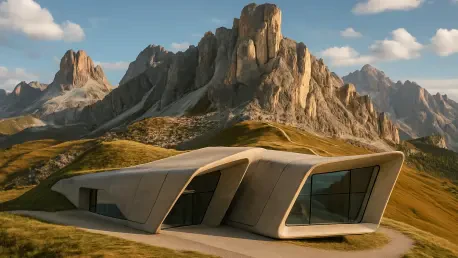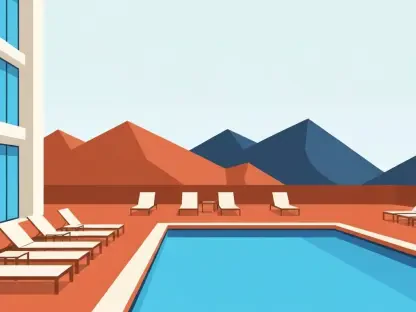As a seasoned hospitality expert with a deep passion for travel and tourism, Katarina Railko has spent years exploring the intersections of culture, adventure, and sustainable travel. Today, we’re diving into her insights on Italy’s breathtaking Dolomites, a region that’s not only a haven for climbers but also home to a unique collection of mountain museums inspired by one of history’s greatest alpinists. In this conversation, Katarina shares her thoughts on the allure of these rugged peaks, the innovative cultural spaces tucked into their heights, and the importance of preserving mountaineering heritage while embracing sustainability. We’ll explore what makes the Dolomites so special, how personal stories and global influences blend in these high-altitude exhibits, and what the future holds for mountain tourism.
What is it about the Dolomites that makes them such a captivating destination for adventurers and travelers alike?
I’ve always been drawn to the Dolomites for their raw, untamed beauty. The jagged cliffs and dramatic pinnacles are unlike anything else—they’ve got this fierce, almost otherworldly charm. It’s not just the scenery, though; it’s the history embedded in every crag. These mountains were battlegrounds during World War One, with via ferrata paths still standing as a testament to human grit. For me, they represent a perfect blend of nature’s power and human resilience, which is why they’re a magnet for hikers, climbers, and anyone craving a deeper connection to the wild.
How do you think the unique geology and history of the Dolomites shape the experiences of those who visit?
The geology of the Dolomites is a story in itself—over 250 million years of shifting earth, landslides, and avalanches have carved out these stark, vertical landscapes. It’s humbling to stand there and feel the weight of time. Then you’ve got the history, from ancient trade routes to wartime struggles, that adds layers of meaning. When you’re climbing or even just gazing at the peaks, you’re not just seeing rock; you’re witnessing a battlefield, a sanctuary, and a canvas of human endurance. It makes every step feel profound, whether you’re a seasoned mountaineer or a casual visitor.
Can you share your thoughts on the significance of high-altitude museums in a place as remote as the Dolomites?
I find it incredibly inspiring that these museums exist in such isolated, windswept locations. They’re not just about displaying artifacts; they’re about creating a space for reflection right in the heart of the mountains. Placing them at high altitude, often in repurposed structures like old cable car stations, ties them directly to the environment they celebrate. It’s a bold statement—bringing culture and history to places where nature reigns supreme. For visitors, it’s a chance to pause and think about their relationship with these wild spaces, which is so important in an era of rapid climate change.
What role do you believe sustainability plays in projects like transforming old structures into cultural spaces in the mountains?
Sustainability is absolutely critical, especially in fragile environments like the Dolomites. Repurposing existing structures, rather than building anew, minimizes the impact on the landscape and preserves resources. It’s a practical choice, but it’s also symbolic—it shows respect for the mountains and a commitment to protecting them for future generations. I think it sends a powerful message to travelers: we can enjoy and honor these places without leaving a heavy footprint. It’s a model I’d love to see replicated in other destinations.
How do cultural elements from far-flung places, like Himalayan art or Tibetan prayer wheels, enrich the narrative of mountaineering museums in the Dolomites?
I love how these elements weave together different mountain cultures into a single story. Mountains, no matter where they are, share a universal language of challenge and reverence. Including Himalayan art or prayer wheels in a Dolomites museum highlights that connection—it shows how climbers and communities across the globe have similar spiritual and emotional ties to these peaks. It broadens the perspective, reminding us that mountaineering isn’t just a sport; it’s a cultural journey that transcends borders. For visitors, it’s an invitation to think about the shared human experience in these high places.
Why do you think it’s important to preserve the spirit and traditions of mountaineering for future generations?
Mountaineering isn’t just about conquering peaks; it’s about understanding our place in nature and pushing the limits of what’s possible. Those traditions—of perseverance, respect for the environment, and storytelling—carry lessons that are timeless. In a world where technology often distances us from the natural world, preserving that spirit keeps us grounded. It teaches humility and reminds us to protect these wild spaces. Museums and cultural projects in the mountains play a huge role in passing down that ethos, inspiring young adventurers to approach the outdoors with awe and responsibility.
What do you see as the biggest challenge facing mountain tourism in regions like the Dolomites today?
Balancing growth with preservation is the biggest hurdle. The Dolomites are seeing more visitors every year, which is fantastic for local economies but puts immense pressure on the environment. Overcrowding, trail erosion, and resource strain are real issues. There’s also the challenge of maintaining authenticity—ensuring that tourism doesn’t dilute the raw, rugged essence of these mountains. I think the solution lies in education and sustainable practices, encouraging travelers to tread lightly and respect the fragility of these landscapes while still experiencing their magic.
Do you have any advice for our readers who are eager to explore the Dolomites or other mountain destinations responsibly?
Absolutely. First, do your homework—learn about the area’s history, ecology, and local customs before you go. Stick to marked trails and follow guidelines to minimize your impact. Consider traveling in the shoulder seasons to avoid peak crowds, which helps ease the strain on the environment. Support local businesses, whether it’s staying at family-run guesthouses or hiring local guides—they often have the best insights and a vested interest in preservation. Most importantly, approach the mountains with humility. They’re not just a playground; they’re a living, breathing part of our world that deserves our care and respect.









